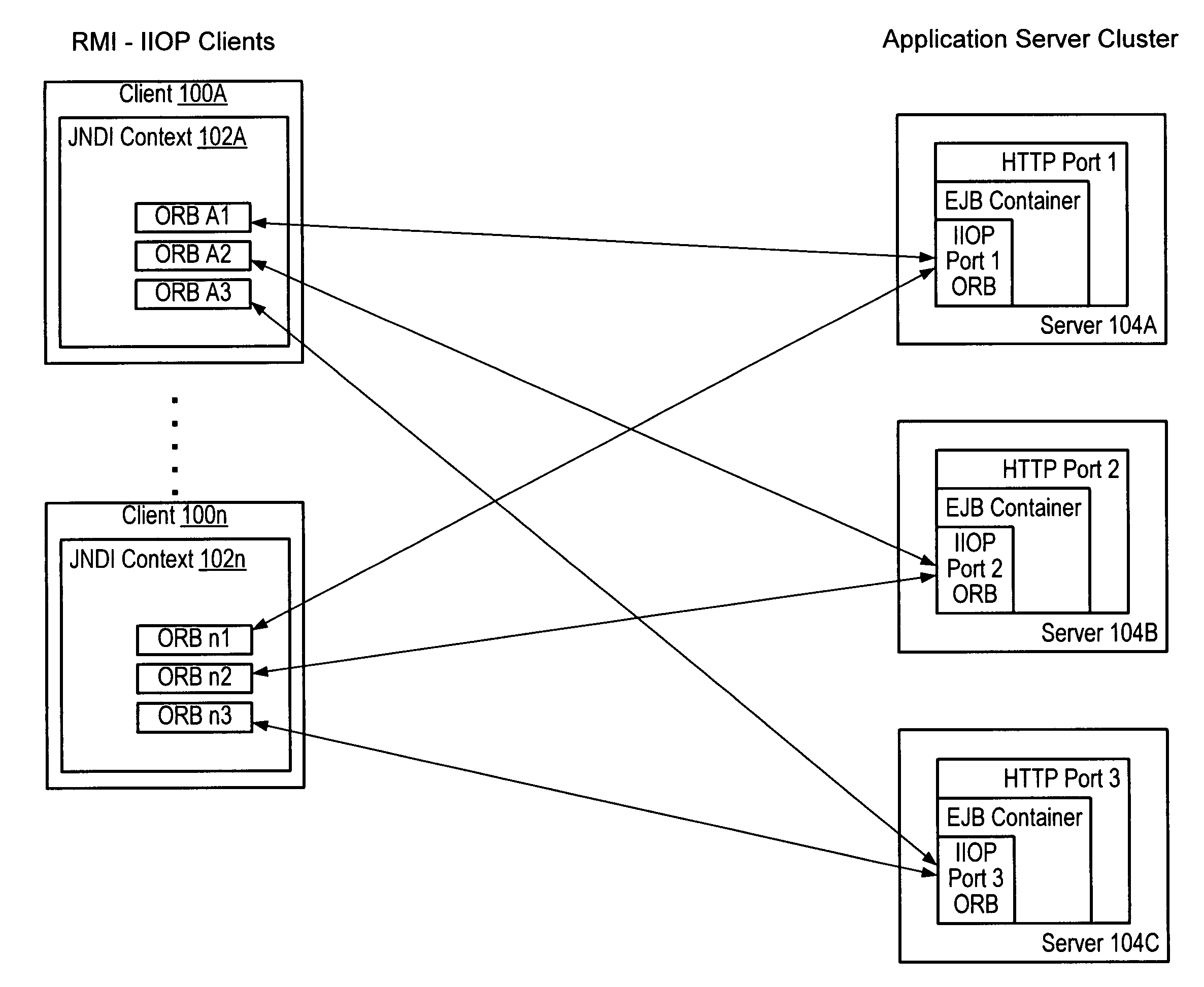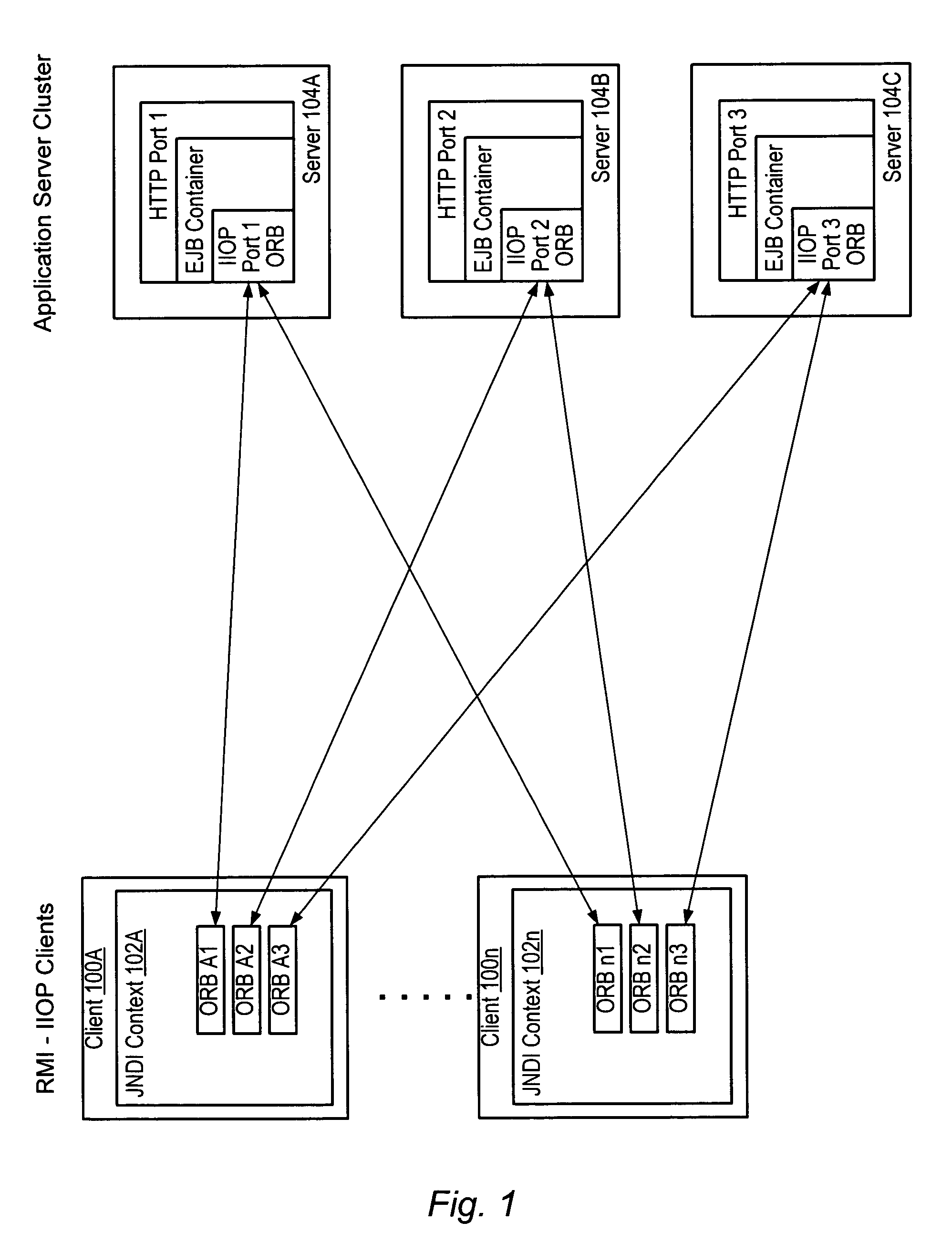System and method for RMI-IIOP request load balancing
a load balancing and request technology, applied in the field of system and method, can solve problems such as performance problems, application throughput and performance decline, and application end users' bad response times, and achieve the effect of improving response time and overall system performan
- Summary
- Abstract
- Description
- Claims
- Application Information
AI Technical Summary
Benefits of technology
Problems solved by technology
Method used
Image
Examples
Embodiment Construction
[0027]Embodiments of a system and method for client-side RMI-IIOP request load balancing are described. Some embodiments may provide a vendor-independent mechanism for load balancing RMI-IIOP requests using standards-based JNDI (Java Naming and Directory Interface) SPIs. One embodiment may use an implementation of a Context Factory class such as the JNDI ContextFactory SPI (Service Provider Interface) for RMI-IIOP request load balancing. Using embodiments, a client may load-balance RMI-IIOP requests to one or more of the application server instances in an application server cluster. Embodiments may load-balance RMI-IIOP requests of one or more clients to different application server processes, thereby preferably improving response time and overall system performance.
[0028]One embodiment provides a mechanism to load-balance RMI / IIOP requests from one or more rich clients to a plurality of application server instances. In single-server instances, the server can get overwhelmed if ther...
PUM
 Login to View More
Login to View More Abstract
Description
Claims
Application Information
 Login to View More
Login to View More - R&D
- Intellectual Property
- Life Sciences
- Materials
- Tech Scout
- Unparalleled Data Quality
- Higher Quality Content
- 60% Fewer Hallucinations
Browse by: Latest US Patents, China's latest patents, Technical Efficacy Thesaurus, Application Domain, Technology Topic, Popular Technical Reports.
© 2025 PatSnap. All rights reserved.Legal|Privacy policy|Modern Slavery Act Transparency Statement|Sitemap|About US| Contact US: help@patsnap.com



